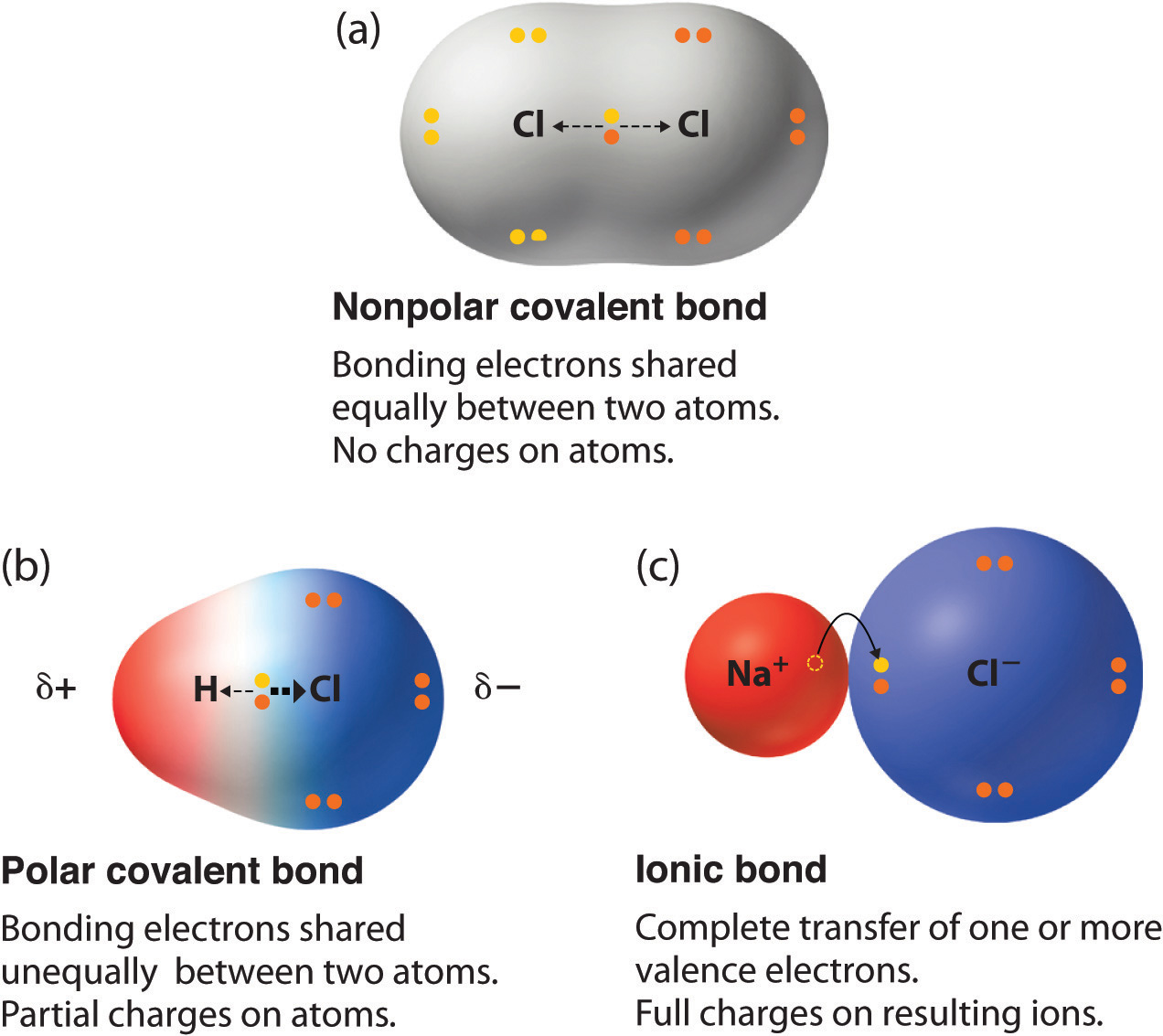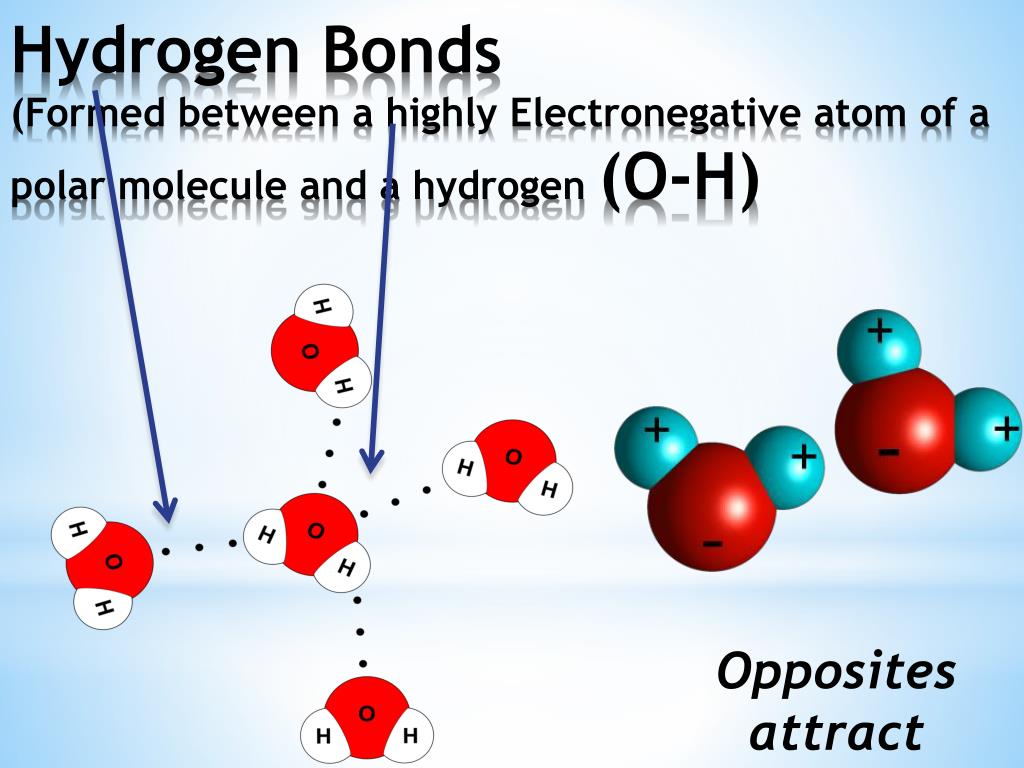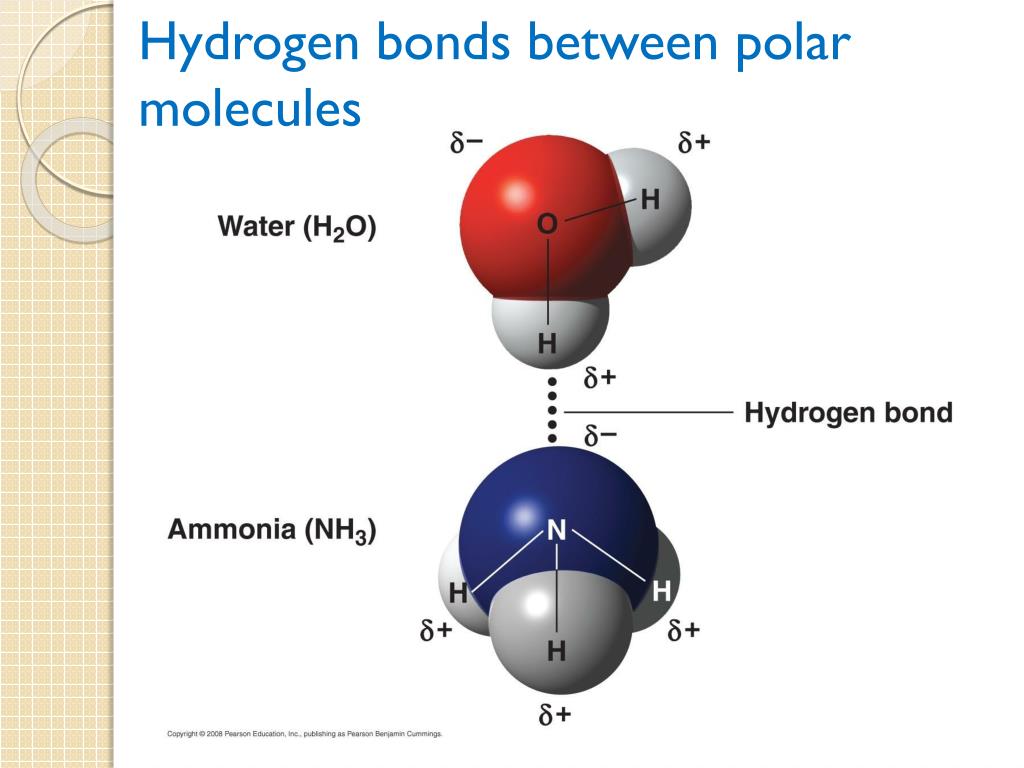What Causes Hydrogen Bonds To Form Between Polar Molecules
What Causes Hydrogen Bonds To Form Between Polar Molecules - These very highly electronegative elements create. Web the hydrogen bond in polar molecules occurs only in compounds that have hydrogen bonded to n, o, or f. No , they are different. In contrast to intramolecular forces, such as the. Web therefore, the molecules are polar; Hydrogen is more electronegative than oxygen, generating a partial negative charge. Web hydrogen bonds are attractions of electrostatic force caused by the difference in charge between slightly positive hydrogen ions and other, slightly negative ions. Hydrogen bonding occurs due to the attraction of two or more. Web the hydrogen bond has only 5% or so of the strength of a covalent bond. Web hydrogen bonding, interaction involving a hydrogen atom located between a pair of other atoms having a high affinity for electrons;
Web nov 19, 2015. Image courtesy hydrodgen bond pictures to pin on pinterest however, there can be. This problem has been solved! Web what causes hydrogen bonds to form between polar molecules? Web water owes these unique properties to the polarity of its molecules and, specifically, to their ability to form hydrogen bonds with each other and with other molecules. The hydrogen atoms become positively charged and are able to form hydrogen bonds to negative ions or negatively charged parts of other. Web answer (1 of 3): Web the presence of hydrogen bonding between molecules of a substance indicates that the molecules are polar. Web why do hydrogen and oxygen form polar covalent bonds within water molecules? No , they are different.
Web hydrogen bonding, interaction involving a hydrogen atom located between a pair of other atoms having a high affinity for electrons; Web answer (1 of 3): For actual hydrogen bonding, both molecules bound need to be polar. Web the presence of hydrogen bonding between molecules of a substance indicates that the molecules are polar. Hydrogen is more electronegative than oxygen, generating a partial negative charge. Web water owes these unique properties to the polarity of its molecules and, specifically, to their ability to form hydrogen bonds with each other and with other molecules. This problem has been solved! Web hydrogen bonding is another type of dipole force seen particularly between h atoms that are bonded to highly electronegative atoms like f, o and n. The properties of liquids are intermediate between those of gases and solids, but are more similar to solids. Web why do hydrogen and oxygen form polar covalent bonds within water molecules?
Directly visualizing hydrogen bonds
Web hydrogen bonding is another type of dipole force seen particularly between h atoms that are bonded to highly electronegative atoms like f, o and n. These very highly electronegative elements create. Hydrogen is more electronegative than oxygen, generating a partial negative charge. Web hydrogen bonding, interaction involving a hydrogen atom located between a pair of other atoms having a.
Learn for free about math, art, computer programming, economics
The properties of liquids are intermediate between those of gases and solids, but are more similar to solids. Web hydrogen bonding is another type of dipole force seen particularly between h atoms that are bonded to highly electronegative atoms like f, o and n. Web hydrogen bonds are attractions of electrostatic force caused by the difference in charge between slightly.
[Solved] and hydrogen molecules. Water is a polar molecule. Label the
Web what causes hydrogen bonds to form between polar molecules? Web the presence of hydrogen bonding between molecules of a substance indicates that the molecules are polar. Hydrogen is more electronegative than oxygen, generating a partial negative charge. Web what causes hydrogen bonds to form between polar molecules? These very highly electronegative elements create.
In hydrogen bonds, do both molecules have to be polar? Quora
Web answer (1 of 3): It comes about as a result of the attraction. The hydrogen atoms become positively charged and are able to form hydrogen bonds to negative ions or negatively charged parts of other. No , they are different. Such a bond is weaker than an ionic bond or.
The Curious Wavefunction A bond by any other name... How the simple
Web answer (1 of 3): Web nov 19, 2015. Web what causes hydrogen bonds to form between polar molecules? Web hydrogen bonding is another type of dipole force seen particularly between h atoms that are bonded to highly electronegative atoms like f, o and n. Web water owes these unique properties to the polarity of its molecules and, specifically, to.
Difference Between Intermolecular and Intramolecular Hydrogen Bonding
Web hydrogen bonds are attractions of electrostatic force caused by the difference in charge between slightly positive hydrogen ions and other, slightly negative ions. You'll get a detailed solution from a subject matter expert that helps you learn. Hydrogen is more electronegative than oxygen, generating a partial negative charge. Web what causes hydrogen bonds to form between polar molecules? Web.
Chapter 5.6 Properties of Polar Covalent Bonds Chemistry LibreTexts
Web the hydrogen bond in polar molecules occurs only in compounds that have hydrogen bonded to n, o, or f. For actual hydrogen bonding, both molecules bound need to be polar. Web what causes hydrogen bonds to form between polar molecules? Web the presence of hydrogen bonding between molecules of a substance indicates that the molecules are polar. The hydrogen.
Describe where a hydrogen bond can form among water molecules
This problem has been solved! However, when many hydrogen bonds can form between two molecules (or parts of. Web nov 19, 2015. It comes about as a result of the attraction. Web hydrogen bonding is another type of dipole force seen particularly between h atoms that are bonded to highly electronegative atoms like f, o and n.
PPT Properties of Water PowerPoint Presentation, free download ID
These very highly electronegative elements create. Web the presence of hydrogen bonding between molecules of a substance indicates that the molecules are polar. However, when many hydrogen bonds can form between two molecules (or parts of. Web what causes hydrogen bonds to form between polar molecules? Web water owes these unique properties to the polarity of its molecules and, specifically,.
PPT Ch 2 The Chemical Context of Life PowerPoint Presentation, free
Web nov 19, 2015. Image courtesy hydrodgen bond pictures to pin on pinterest however, there can be. No , they are different. Hydrogen is more electronegative than oxygen, generating a partial negative charge. These very highly electronegative elements create.
You'll Get A Detailed Solution From A Subject Matter Expert That Helps You Learn.
However, when many hydrogen bonds can form between two molecules (or parts of. This problem has been solved! These very highly electronegative elements create. Web answer (1 of 3):
Web The Presence Of Hydrogen Bonding Between Molecules Of A Substance Indicates That The Molecules Are Polar.
Web hydrogen bonds are attractions of electrostatic force caused by the difference in charge between slightly positive hydrogen ions and other, slightly negative ions. Image courtesy hydrodgen bond pictures to pin on pinterest however, there can be. Web therefore, the molecules are polar; In contrast to intramolecular forces, such as the.
Web What Causes Hydrogen Bonds To Form Between Polar Molecules?
Web water owes these unique properties to the polarity of its molecules and, specifically, to their ability to form hydrogen bonds with each other and with other molecules. Web the hydrogen bond has only 5% or so of the strength of a covalent bond. It comes about as a result of the attraction. Hydrogen bonding occurs due to the attraction of two or more.
This Means The Molecules Will Be Soluble In A Polar Solvent Such.
The properties of liquids are intermediate between those of gases and solids, but are more similar to solids. For actual hydrogen bonding, both molecules bound need to be polar. Web the hydrogen bond in polar molecules occurs only in compounds that have hydrogen bonded to n, o, or f. The hydrogen atoms become positively charged and are able to form hydrogen bonds to negative ions or negatively charged parts of other.







